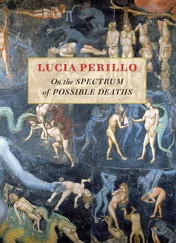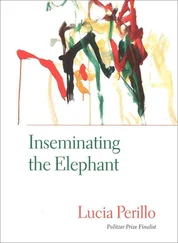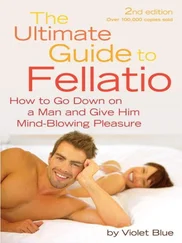For my job at the monastery, which I arrived at with only a Smokey the Bear hat and a box full of park ranger uniforms, I bought some dowdy conservative clothes in the Goodwill store to camouflage my true self, which I envisioned then as “Amazon slut-poet of the wilderness,” a persona I concocted to compensate for my insecurities. To further complicate my self-presentation, sometimes my brain felt as though it had been struck by a mild bolt of lightning: a wave passed from my nape to my temple, and in its wake I was left with no idea what I had been thinking. A couple of times a day I had to think my way back into my life from scratch. A theater professor asked me if I wanted her to train me to overcome my stage fright when she saw me swoon at the first faculty meeting when I stood up to introduce myself.
In addition to remedial English, I also taught some Japanese students, whom I led on nature walks down the labyrinthine sentences of Charles Dickens. The students often seemed to be weighted with sorrow that they lugged around on my behalf, and I could not fathom what I’d done to cause them to adopt this body language in my presence. All I could think of was that, at the Christmas party, I volunteered to lead off the singing of “Rudolph the Red-nosed Reindeer” and dove into a key not to be found in either our Western tonal scale or their Eastern one and which caused their faces to redden, as if my clothes had gotten blown off by a tornado. I remembered an Asian proverb: One breaking of wind takes away the learning of an entire semester .
When the Japanese students arrived at the beginning of the semester, they were escorted by a gracious older man who had at great expense procured a heavy gilt-framed mirror, more enormous than a standard sheet of plywood. Etched into it were the words You Mirror —which confused me at first. I thought it meant the mirror was supposed to be its own autonomous being: Hey you! Mirror! But then I learned that the students were supposed to pause before it, in order to consider the image they were presenting to the world.
Naturally, the job required me to be open to the mysteries of foreign cultures, but still I had to restrain myself to not take a hammer to that mirror. It summarized the injustice of having an objective self that moves in an external world — if it exists, I am not so sure — the world that is a processing plant, grinding the meat of the me and churning out the sausage of the you. And even though my limp was barely visible back then, I scurried by the mirror, wishing I were a vampire who would vanish in its gaze.
Last year’s therapist said: our society wants to make disabled people invisible. I said that being invisible would be all right with me.
Another memory from college: my tall friend Janis jumping wildly and whipping her arms overhead, after we walked into a smoky upstairs loft in Montreal that was packed with people dancing. Janis making a joke by winking at me as she shouted into the din: Look at me! Hey, everybody, look at me! Her joke was that our exuberance was fueled by our vanity, our desire to be seen , a problem Janis solved later that semester by starving herself into a skeleton that was barely visible when she turned sideways.
More recently, Susan Sontag has written, in connection with the pictures of the prisoners confined in Iraq’s Abu Ghraib prison: “To live is to be photographed, to have a record of one’s life, and therefore to go on with one’s life oblivious, or claiming to be oblivious, of the camera’s nonstop attentions. But to live is also to pose. To act in the community of actions recorded as images.” I try to shed this burden of modernity, this requirement that we be photographed and suffer through additional replications of our bodies. The actual one I have to live with is quite enough. “There is the deep satisfaction of being photographed,” Sontag writes, “to which one is now more inclined to respond not with a stiff, direct gaze (as in former times) but with glee.” But not me — I remain as stern as a Victorian before the lens.
This is undoubtedly a manifestation of my childish wish to undo reality, this not-wanting the photograph to weld my objective presence to the wheelchair. If I were to rob a bank, the witnesses would identify me by the chair, even if I were Frankenstein. My green skin and scars and bolts would be noted as secondary observations. What could override the image — a chartreuse muumuu? A large fur hat like a guard at Buckingham Palace? Even if I wore nothing at all my nakedness would be subsumed.
A scholar might call the wheelchair A Transcendent Signifier. The only thing I can think of to put in it, to strip its black-hole type gravitational power — the way it sucks everything into it — is to put a bomb in the seat. Or a baby. A bomb and a baby might work best.
Animals go naked, and the duck in extravagant plumage is the exception, because ordinarily they want to blend in, they want to travel camouflaged. This generality has not prevented the evolution of bright-red poisonous frogs whose color announces their lethal meat and the danger of their being consumed. Or the evolution of what is known as dazzle camouflage , like the zebra’s stripes or the loon’s op-art breast and neck, configurations that prevent predators from being able to tell exactly where the prey is, by turning the body into a blurry confusion, especially when it’s in motion.
The elk herd that stands far off in the meadow by the Saint John’s River looks to me, at first, like either dead shrubs or bales of hay. My binoculars are not powerful enough to do much good, until finally the shrubs begin to move. I also make out their pale haunches, rimmed in darker brown, I presume as an erotic costuming, the crotchless panty of the animal world. The summer has been dry and the grass is spare, so the elk forage in the dust for the pale withered blades.
There’s only one trail, running atop the levee that separates the meadow from the river. It leads to an old hunting blind that’s been restored as a viewing blind. We gradually become aware that the bird noises we’ve been hearing, the squeals and whistles, are actually coming from the elk. I’d heard the word bugling used to describe their calls, and so I pictured an assertive tooting, but these are shy wooing sounds that seem wrongly scaled to the size of the animal. The muffled cries sound like a kettle that has not yet come to boil.
The males make the sound — this time of year, they wear ornate interlacing horns. I count just five of them, as opposed to maybe thirty females. It seems that the size of the headgear determines the male’s status in the herd. One male wears a great scaffold with six pointy tips on each of his antlers, and he struts as if he’s king of all the rest, who are mostly occupied with snuffling in the grass.
That the big male has a strand of lichen wrapped around his horns like a green feather boa apparently doesn’t seem to affect his standing in the herd, even though he looks completely ridiculous as he leads the others in the direction of the parking lot. Ridiculous to me, and also a lesson — that one can go through life quite successfully without considering one’s objective image presented to the world. A mirror would only enrage the big buck now. He would see a rival there, another male with a rack as big as his, and he would probably charge ahead and smash the mirror, thereby solving the problem.
A Cripple in the Wilderness
I used to be a naturalist, but, in all honesty, what I liked more than the names and facts and maybe even the sights of nature was the opportunity that being a naturalist gave me to walk around in the woods. For a while I worked at Mount Rainier, and, in the early summer, I liked to go to a place called Summerland, where I skied on slopes that were not too crevasse-covered or steep. Finding my way was difficult with the trail obliterated by snow, and I was vain about my willingness to go alone, though I looked like a child.
Читать дальше











![Various - Birds and Nature, Vol. 12 No. 5 [December 1902]](/books/745517/various-birds-and-nature-vol-12-no-5-december-thumb.webp)
![Various - Birds and Nature Vol. 11 No. 2 [February 1902]](/books/745533/various-birds-and-nature-vol-11-no-2-february-1-thumb.webp)